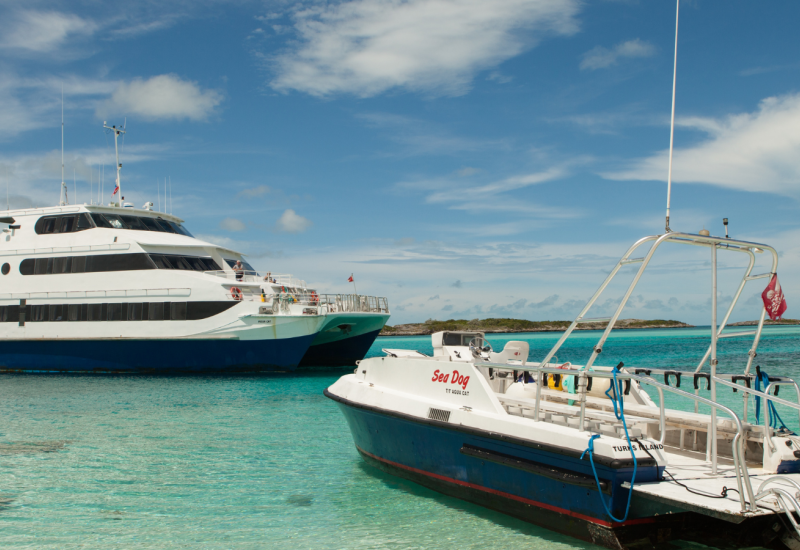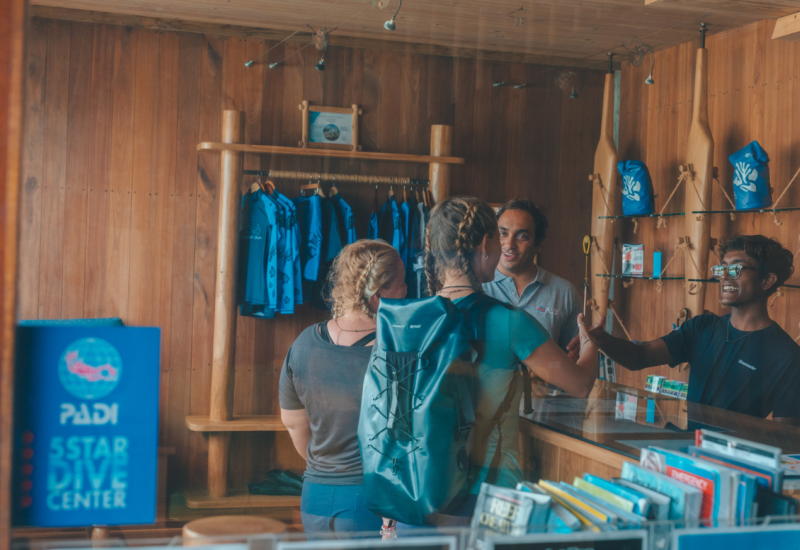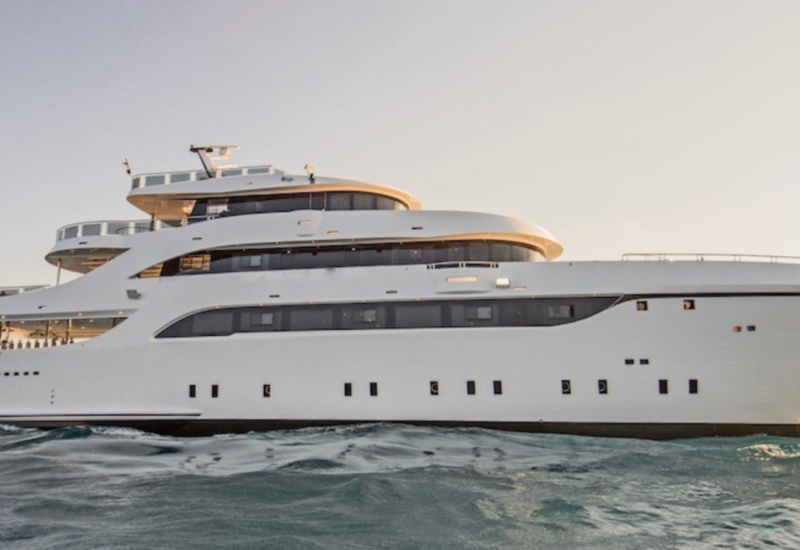Swimming with Orcas in Norway

Franco BanfiCapt. Olav Magne Strömsholm is among the most experienced orca captains in the world, having started the Sula orca expeditions in 1992
Leaning forward to escape the Arctic wind, I catch sight of my snow-filled fins and can’t stop laughing. The feeling in my face has long since disappeared, and the other guests are equally rigid, turning purple in the minus 4°F Norwegian wind chill. Snow is everywhere, and I long to throw myself into the 36°F water to warm up. I never knew snorkeling could be so extreme—frankly, it’s absurd.
After what feels like a lifetime, freezing by degrees, we hear orcas blow beside us. Their impressive fins rise in unison, reflecting the weak winter light. “Go, go, go!” shouts Gijs, one of Sula’s liveaboard crew, tasked with guiding us closer to the orca. Not wasting a second, we plunge into the green water, hearts racing, and fin hard. In the chaos I have no idea which way to go, but it doesn’t matter. I’m eye to eye with an orca, casually gliding past and turning its head to check me out. I forget everything about being cold and instead wish I could stay on Sula forever.
Legend of Orcas
There’s a good reason the Sula liveaboard, a charming ex-fishing boat, is also called “Legend of Orcas.” Built to withstand Arctic conditions, this sturdy 88.5-foot boat covers vast areas in search of orcas and stays close to its accompanying dinghy, Haarek. Unlike land-based orca expeditions, there are no cold transfers after exiting the water; instead, we are off Haarek and on board Sula within moments.
Helping ourselves to hot drinks and waiting for yet another exquisite meal, guest Sarah Barrett enthuses about Sula’s setup—“Big enough to house everyone and everything we need, but small enough it’s like living in a house with all your friends!” —and the food: “Some of the best I’ve ever had.”
It comes as no surprise to learn Capt. Olav Magne Strömsholm is among the most experienced orca captains in the world, having started the Sula orca expeditions in 1992. Passionate about Norway’s orcas, he tailored the expeditions to suit even guests who don’t want to get in the water. While there’s no scuba diving with orcas, guests can stay on the boat, freedive or snorkel depending on their preferences.
Read More: Amazing Footage of Freediver Swimming with Killer Whales

Krystian PapskiThe crew of the Sula makes finding orcas in the vast, remote landscape look easy.
“I am proud of my crew as I have trained them to be the best experienced orca team in the field,” Strömsholm says. The crew is certainly attentive, taking time to kit up each person properly from a range of drysuits.
As Sula’s orca expert Pierre Robert de Latour helps choose my suit, he tells me with a casual smile, “Nobody is cold in the water; it’s the wind chill on the Haarek that’s the worst part.” I soon realize he’s right; the water is surprisingly warm, and the wind is bitingly cold.
Searching for orcas each morning, we see snow-dusted mountains turn pink and occasional humpbacks passing by. The crew makes finding orcas in the vast, remote landscape look easy. Working closely with local fishermen and scientists, they know where to go and take us there without delay. With the shout “Orcas, kit up!” we’re on our feet and boarding Haarek, a task made easy by the ship’s low-sided design.
Sheer Joy
Despite the short days, with just three to four hours of daylight, the length of time with the orcas is ideal. Every day is unique. Mesmerized by a group of sleeping orcas one morning, their fins completely still, we take our time watching them. There’s no rush—there are plenty more to find.
“Baby orca! Look!” exclaims my husband, Nicholas, when we see a family of orcas with their impossibly small juveniles. The whales accept our presence aboard the unobtrusive Haarek, allowing us a glimpse into their lives before we jump in yet again and swim alongside them.
Nights are no less enthralling, with exceptional displays of green and pink northern lights, uninterrupted by light pollution. We become certified by the Undersea Soft Encounter Alliance—a network focused on teaching divers how to interact with marine mammals ethically—during evening lectures.

Denis Belitsky/shutterstock.comThe aurora borealis can seen from the deck of Sula.
As Sula’s lead dive guide for more than 20 years and an orca behaviorist, de Latour shares his knowledge unreservedly. “After over 6,000 close encounters with orca, I think we must invest time, money and power to understand their language. They are the key to biodiversity in the oceanic ecosystem, and we have a lot to learn.”
De Latour thought nothing of taking the hand of a guest who, too cold to dive, had yet to see an orca underwater partway through the week. Persuading her to get in the water just once more, he pulls her along at speed right into the action, ensuring her one moment in the water with orcas is perfect. The joy on her face afterward says it all.
As another guest screams delightedly into his snorkel when he sees an orca, the crew can’t stop smiling. It’s obvious that spending time with these misunderstood predators is a life-changing experience for us all.

Greg LecoeurOrcas are apex predators. No other animal (besides humans) hunt orcas.
5 Reasons to Dive Sula
- Taste Test: The food is incredible, with the chef catering to every dietary requirement without compromising on taste. From sugar-free to gluten-free to vegan, he has us racing to the dining area each time.
- All of the Lights: The aurora borealis seen from the deck of Sula is stunning. With no obstructions in sight, you can take the best photographs and enjoy the show in all its colorful glory.
- Hot and Cold: An evening in Sula’s fire-heated hot tub with a dip in the cold Arctic waters is a very popular choice.
- On the Move: Being a liveaboard, Sula can move with the orcas. Because the orcas’ migration route is not known precisely each year, this is the best way to track them.
- Local Flavor: Sula docks at remote islands and harbors at night, giving you the chance to experience tiny, picturesque Norwegian villages.

Manolis Smalios/Shutterstock.com;Sula docks at remote islands and harbors at night, giving you the chance to experience tiny, picturesque Norwegian villages.
Need to Know
When to Go
Orcas can be seen in northern Norway from the end of
October until February, usually inside the fjords near Tromsø. December is one of the best months for this experience—if the weather conditions are good—despite the lower light levels. Other species of whales, including humpbacks, can also be seen throughout the season.
Travelers Tip
Take plenty of wool base layers and a woolen sweater for under drysuits, plus a good winter jacket for exploring at night. The meetup point, the city of Tromsø, is heavily affected by snow, and the steep streets can be slippery underfoot. They are easily managed with snow boots or ice cleats. Oslo is the arrival point for international flights from the United States, with an average flight time of eight hours from New York City.
Dive Conditions
The water temperature ranges from 43°F down to 34°F;
visibility is usually 65 to 80 feet, dropping to 33 feet after a storm. Both snorkeling and freediving are exhausting, mostly because of the extreme air temperatures and constant need to haul yourself in and out of the water with fins on. Many guests start out in an appropriate Arctic wetsuit but still find themselves switching to a drysuit by the end of the trip because of the cold conditions.
Operator
Sula is run by Orca Norway and is an 88.5-foot ex-fishing vessel. With a 20-foot beam and spacious deck, there is plenty of room for the 12 guests and five to eight crewmembers. There are seven two-person cabins with three shared toilets and two showers. None of the cabins have en suite bathrooms, but all cabins are centrally heated with individual temperature control. Sula also features a lounge where lectures are held, along with an eight-person hot tub.
Price Tag
Starts at $5,233 per person for a six-day orca expedition.










